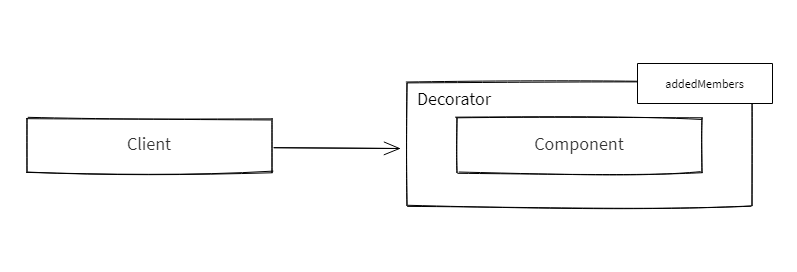Decorator
Definition
Attach additional responsibilities to an object dynamically. Decorators provide a flexible alternative to subclassing for extending functionality.
Summary
The Decorator pattern extends (decorates) an object’s behavior dynamically. The ability to add new behavior at runtime is accomplished by a Decorator object which ‘wraps itself’ around the original object. Multiple decorators can add or override functionality to the original object.
An example of a decorator is security management where business objects are given additional access to privileged information depending on the privileges of the authenticated user. For example, an HR manager gets to work with an employee object that has appended (i.e. is decorated with) the employee's salary record so that salary information can be viewed.
Decorators provide flexibility to statically typed languages by allowing runtime changes as opposed to inheritance which takes place at compile time. JavaScript, however, is a dynamic language and the ability to extend an object at runtime is baked into the language itself.

Participants
The objects participating in this pattern are:
Client -- in sample code: the run() function
- maintains a reference to the decorated Component
Component -- in sample code: User
- object to which additional functionality is added
Decorator -- in sample code: DecoratedUser
- 'wraps around' Component by maintaining a reference to it
- defines an interface that conforms to Component's interface
- implements the additional functionality (addedMembers in diagram)
Sample code in JavaScript
In the example code a User object is decorated (enhanced) by a DecoratedUser object. It extends the User with several address-based properties. The original interface must stay the same, which explains why user.name is assigned to this.name. Also, the say method of DecoratedUser hides the say method of User.
The log function is a helper which collects and displays results.
// Component
var User = function(name) {
this.name = name;
};
User.prototype.say = function() {
log.add('User: ' + this.name);
};
// Decorator
var DecoratedUser = function(user, street, city) {
this.user = user;
this.name = user.name; // ensures interface stays the same
this.street = street;
this.city = city;
};
DecoratedUser.prototype.say = function() {
log.add('Decorated User: ' + this.name + ', ' + this.street + ', ' + this.city);
};
// Logging helper
var log = (function() {
var log = '';
return {
add: function(msg) { log += msg + "\n"; },
show: function() { console.log(log); log = ''; }
}
})();
// Client
function run() {
// Component instance
var user = new User("David");
user.say();
var decoratedUser = new DecoratedUser(user, "Abovyan", "Yervan");
decoratedUser.say();
log.show();
};